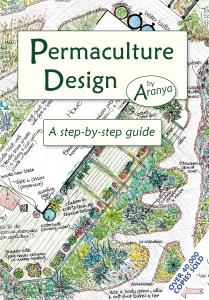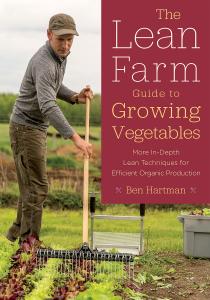Building on our previous discussion of permaculture principles and benefits, we now delve deeper into its practical application. Permaculture transcends typical gardening approaches, inviting us to bond profoundly with our environment. This system of ecological design is not only about growing food but also about creating living spaces that work in harmony with nature.
We’ve already looked at how permaculture can minimize our ecological footprint, a topic that’s increasingly vital given current environmental challenges like climate change and resource scarcity. Embracing permaculture is more than a gardening choice—it’s a step towards greater self-reliance and sustainability.
To fully appreciate permaculture, it’s essential to understand its foundations. Conceived by David Holmgren and Bill Mollison in the 1970s, permaculture extends beyond organic farming. It’s an integrated approach, bringing together land, resources, and people to emulate nature’s efficient, waste-free cycles. In this next post, we’ll explore how to practically implement these principles in your own space, crafting ecosystems that are not only productive but also sustainable and resilient.
Please read my post on The Essential Guide To Sustainable Heirloom Gardening Practices for a more holistic view.
Permaculture Ethics and Principles
Permaculture’s foundational ethics guide its practices and shape a sustainable and balanced interaction with our environment. Let’s take a closer look at each of these ethics to understand their significance in permaculture design:
Care for the Earth
- Responsibility to Nature: This ethic emphasizes our duty to protect and nurture the earth. It involves practices that regenerate and enrich the soil, conserve water, and preserve biodiversity.
- Sustainable Practices: Implementing sustainable techniques like composting, organic gardening, no-till methods, and rainwater harvesting. These practices ensure that the natural resources are conserved and enhanced for future generations.
- Ecosystem Preservation: Promoting the health of forests, waterways, and other vital ecosystems. This involves understanding the interconnectedness of these systems and minimizing harmful impacts on them.
Care for People
- Community and Self-Care: Ensuring that individuals and communities access the resources necessary for their well-being, including healthy food, clean water, shelter, and a safe environment.
- Education and Empowerment: Sharing knowledge about sustainable living and permaculture practices. This ethic also involves creating supportive community networks that foster resilience and self-reliance.
- Health and Wellness: Encouraging practices that contribute to physical and mental health, such as growing nutrient-rich foods and creating green spaces that offer recreational and therapeutic benefits.
- Resource Redistribution: This ethic is about sharing surplus resources, whether it’s food, seeds, or knowledge, to support others in the community. It encourages generosity and a sense of communal responsibility.
- Limiting Consumption: Advocating for responsible consumption and production. This involves being mindful of one’s ecological footprint and striving to live within one’s means without depleting resources.
- Cyclical Resource Use: Emphasizing the importance of recycling and reusing resources. This includes practices like repurposing materials for garden use and turning waste into compost, thereby creating a closed-loop system where nothing is wasted.
Integrating these ethics into permaculture design can create environmentally sustainable, socially responsible, and equitable systems. These ethics serve as a guiding compass for permaculture practitioners, ensuring that their actions align with the broader goals of environmental stewardship and community well-being.
These ethics extend into 12 principles that provide a framework for creating sustainable systems. They range from ‘Observe and Interact,’ which means taking time to understand natural cycles and patterns before intervening, to ‘Use and Value Diversity,’ underscoring the importance of integrating a variety of species and resources for a resilient ecosystem.
Among the principles, ‘Design from Patterns to Details’ encourages a broad overview first before focusing on finer details, while ‘Apply Self-Regulation and Accept Feedback’ speaks to the need for adaptability and learning from the land and the outcomes of your interventions.
Understanding the interplay between ethics and principles is crucial in permaculture design. These factors guide decisions such as placing elements in the landscape, selecting plant species to cultivate together, and constructing energy-efficient living spaces. It is essential to comprehend these principles to create a sustainable and productive living environment. The following section will examine how to apply these principles in design and planning.
Understanding the Key Elements
We will explore the key components differentiating permaculture from traditional gardening and farming methods. Permaculture is not just about planting seeds; it is about creating a self-sustaining ecosystem that produces benefits for years to come.
The concept of zoning is at the heart of permaculture’s approach. Visualize concentric circles radiating from your home, with each zone dedicated to different activities based on their frequency. This intelligent arrangement reduces waste and energy use while optimizing space utilization.
In permaculture, every animal and plant you introduce plays a significant role. I will assist you in selecting local species that contribute to ecological balance. You can establish symbiotic relationships that naturally maintain your garden by aligning with nature’s processes.
Water conservation is critical to permaculture. Techniques such as capturing rainwater, creating swales, and using drip irrigation are not just about preserving water; they are about intelligent, sustainable gardening practices that guarantee your garden’s vitality.
And, of course, the foundation of it all is soil health. By utilizing composting and mulching, you are enhancing soil fertility and empowering it to sustain a diverse range of life and recycling nutrients back into your ecosystem.
These components form the basis for the next phase: practical implementation. You will learn to evaluate your site, design your garden layout, and integrate it seamlessly with the existing landscape. Get ready to create a productive permaculture garden that is uniquely suited to your environment.
"Here's a little transparency: Our website contains affiliate links. This means we may receive a small commission if you click and make a purchase. Don't worry; there's no extra cost for you. It's a simple way you can support our mission to bring you quality content."
Designing a Permaculture Garden
Your permaculture design begins with conducting an in-depth site analysis and observing your land. Spend several weeks to months familiarizing yourself with the microclimates, soil conditions, and existing vegetation and wildlife. This includes tracking sun and shade patterns, understanding wind and water flow, and assessing soil health by testing and observing earthworm activity, moisture levels, and drainage.
Next, create a comprehensive base map of your space that details physical structures, areas of wear, underground utilities, and prevailing breezes. Plan your garden's zones based on the frequency of use, placing daily used elements closer to your home. Also, think about future expansion and new projects as you evolve.
When selecting plants and garden elements, focus on climate-adaptive plants and design plant guilds with consideration for layering—from tall canopy trees to ground covers. Integrate functional aesthetics by choosing plants and structures that are both beautiful and beneficial, such as flowering herbs for pollinators.
Wildlife habitats are essential for a balanced ecosystem. Create micro-habitats with rock piles, log piles, and water features like ponds or birdbaths to attract diverse fauna. Plant native species that provide food and shelter for local wildlife, enhancing the garden's ecological richness.
Implement your design in phases, starting with infrastructure like paths and large trees, then smaller plants. Amend the soil based on your analysis, and install an irrigation system that meets your garden's specific needs. Adapt your maintenance routine to seasonal changes, and keep a garden journal to track the effectiveness of your methods and make necessary adjustments
.Finally, engage with the community by participating in skill-sharing workshops and community projects. This enhances your knowledge and helps create a network of like-minded individuals who share your passion for sustainable living.
This roadmap combines practical steps with detailed considerations, creating a comprehensive guide for your permaculture gardening journey. It emphasizes the importance of understanding your environment, planning with foresight, nurturing biodiversity, and embracing community engagement for a successful and sustainable permaculture garden.
"Here's a little transparency: Our website contains affiliate links. This means we may receive a small commission if you click and make a purchase. Don't worry; there's no extra cost for you. It's a simple way you can support our mission to bring you quality content."
Permaculture In Practice
Real-world examples can be a great source of inspiration and guidance when it comes to implementing permaculture principles into practice. The following case studies offer a glimpse into the practical applications of permaculture in different environments. These stories range from urban backyards to rural farms and demonstrate how permaculture principles can be adapted to other challenges. Each case study highlights unique strategies and outcomes, showcasing the flexibility and effectiveness of permaculture in creating sustainable, productive, and harmonious spaces. By exploring these examples, we can gain valuable insights and ideas for our own permaculture projects.
Case Study 1: Urban Permaculture Garden
- Location: A small backyard in a suburban area.
- Challenge: Limited space and urban soil contamination.
- Solution: The garden was designed with raised beds to address soil issues, filled with locally sourced compost and organic matter. A vertical garden was installed to maximize space, growing climbing plants like beans and cucumbers. Rainwater harvesting systems were set up to collect rain from the roof, reducing water usage.
- Outcome: The garden produced a variety of vegetables and herbs, demonstrating that productive gardening is possible even in small urban spaces. The garden also became a local example of sustainable living, inspiring neighbors to adopt similar practices.
Case Study 2: Community Permaculture Project
- Location: A communal land shared by a neighborhood.
- Challenge: Creating a shared space that meets various needs and interests.
- Solution: The community collectively designed the space with different zones: a communal vegetable garden, a fruit tree orchard, a children's play area, and a relaxation space with benches and native flowers. They implemented a composting system for garden and kitchen waste. Regular workshops and workdays were organized for maintenance and community building.
- Outcome: The project provided fresh produce and strengthened community bonds. It became a hub for learning and social interaction, with residents of all ages participating in gardening and educational activities.
Case Study 3: Rural Permaculture Farm
- Location: A small-scale farm in a rural area.
- Challenge: Diversifying produce and improving soil health without chemical fertilizers.
- Solution: The farm was divided into several zones, including crop rotation fields, a perennial food forest, and a grazing area for animals. Natural pest control methods were utilized, such as encouraging beneficial insects and companion planting. Animal manure and green waste were composted to enrich the soil.
- Outcome: The farm achieved a diverse output, including vegetables, fruits, eggs, and meat, while maintaining healthy soil and ecosystems. The approach also proved financially sustainable, reducing input costs and generating multiple income streams.
These case studies provide tangible examples of how permaculture principles can be applied in different settings, showcasing the adaptability and benefits of permaculture in urban, community, and rural contexts.
Continuing Your Permaculture Journey: Resources and Education
Permaculture is a lifelong learning journey unfolding as you grow alongside your garden. To deepen your understanding, here are some tailored learning paths:
- Essential Permaculture Literature:
- Dive into seminal works like Bill Mollison's "Permaculture: A Designers' Manual" and David Holmgren's "Permaculture: Principles and Pathways Beyond Sustainability". These texts offer a blend of foundational theory and practical advice.
- Engaging in Practical Workshops and Courses:
- Explore courses ranging from beginner workshops to in-depth Permaculture Design Certificate (PDC) programs. Notable options include Geoff Lawton’s Online PDC Course or local workshops offered at permaculture institutes.
- Embracing Online Learning:
- For flexibility, enroll in online courses like Oregon State University’s "Introduction to Permaculture" or the online offerings from the Permaculture Research Institute. Join online forums and communities for peer support and advice.
- Participating in Community Projects:
- Engage with local community gardens or sustainability projects. These provide practical experience and networking opportunities.
- Continual Engagement:
- Follow permaculture blogs, podcasts, or YouTube channels for ongoing inspiration and updates. Channels like Permaculture Voices or The Permaculture Podcast offer a wealth of information.
Remember, each step you take enriches your permaculture practice. Whether starting with a local project or diving into comprehensive courses, what's important is your commitment to learning and adapting. Your journey will benefit your immediate environment and contribute positively to global sustainability efforts. So, embrace this opportunity to transform your permaculture dreams into reality!









